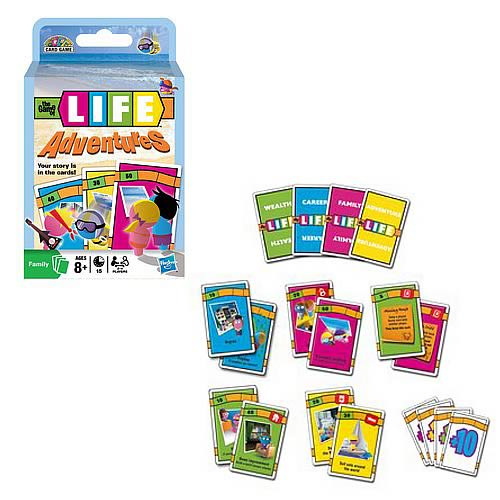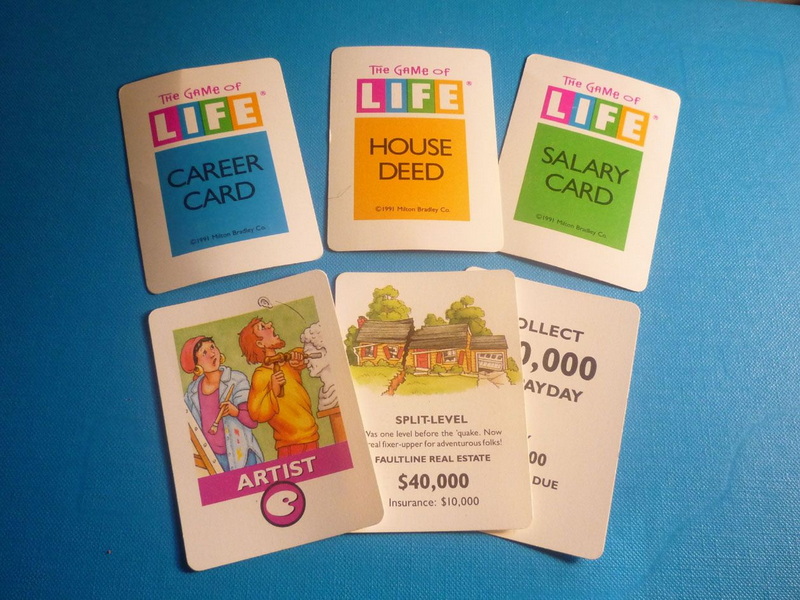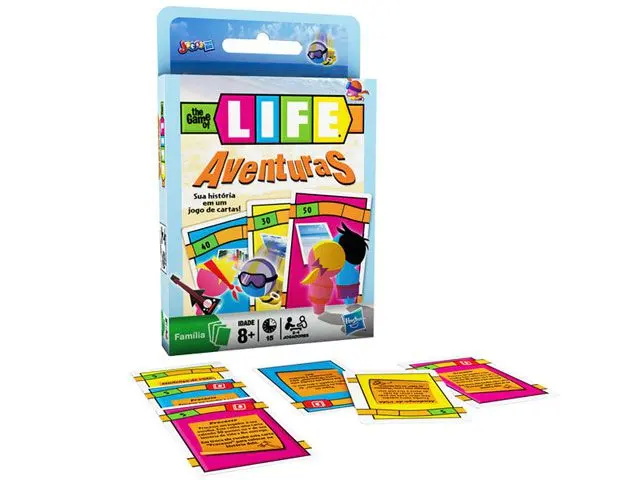Content Menu
● Introduction
● Game Components
● Setting Up the Game
● Gameplay Mechanics
>> Choosing Your Path
>> Taking Turns
>> Life Events
>> Investing and Buying Property
>> Reaching Retirement
● Strategies for Success
>> Education vs. Career Choices
>> Financial Management
>> Family Planning
>> Investment Timing
>> Adaptability
● Advanced Gameplay Tips
>> Understanding Action Cards
>> Risk vs Reward Analysis
>> Endgame Strategy
>> Social Dynamics
● Conclusion
● Frequently Asked Questions
>> 1. What is the objective of The Game of Life?
>> 2. How do players win?
>> 3. Can you change your career during the game?
>> 4. What happens if you run out of money?
>> 5. Is there an age limit for playing The Game of Life?
● Citations:
Introduction
The Game of Life, often simply referred to as "Life," is a classic board game that simulates a person's journey through life, from education and career choices to family and retirement. Designed for two to six players, it provides an engaging way to explore the ups and downs of life's journey while competing to accumulate the most wealth. This article will delve into the rules, strategies, and nuances of playing the Game of Life, ensuring you have all the knowledge necessary to enjoy this timeless game.

Game Components
Before diving into gameplay, it's essential to familiarize yourself with the components of the Game of Life:
- Game Board: The board is designed with a colorful path representing various life stages.
- Spinner: Used to determine how many spaces a player moves during their turn.
- Player Cars: Each player chooses a car to represent their journey on the board.
- Pegs: Players use pegs to indicate their family size and milestones.
- Career Cards: These cards represent different jobs players can choose.
- Salary Cards: These cards indicate how much money players earn based on their careers.
- Life Tiles: Earned throughout the game, these tiles contribute to a player's final score.
- Action Cards: These cards provide various events that can affect players' journeys.
Setting Up the Game
Setting up the Game of Life involves several straightforward steps:
1. Assemble the Board: Place the spinner in the center and ensure all pieces are correctly positioned according to the instructions.
2. Prepare Decks: Shuffle and separate the Career, Salary, House Deed, and Action cards into distinct piles.
3. Choose Player Cars: Each player selects a car and places one peg in it (blue for males, pink for females).
4. Bank Setup: Designate one player as the banker, responsible for managing money and loans.
5. Starting Money: Each player begins with a set amount of money (typically $10,000).
Gameplay Mechanics
Choosing Your Path
At the start of the game, players must decide whether to pursue a college education or enter the workforce directly. This choice influences future career options:
- College Path: Players take out a loan (usually $40,000) and can later choose from more lucrative career options. This path often leads to higher salaries but comes with initial debt.
- Career Path: Players select a career card immediately but may have limited job options. This route allows players to start earning money sooner but may limit their long-term financial potential.
Taking Turns
Players take turns spinning the wheel and moving their cars along the path:
1. Spin the Wheel: The number spun determines how many spaces you move forward on the board.
2. Follow Instructions: Each space has specific instructions based on its color:
- Orange Spaces: Typically involve drawing an Action card or following specific instructions that can lead to unexpected events or financial gains/losses.
- Pink Spaces: Often relate to family events like marriage or having children, which can impact your financial situation significantly.
- Blue Spaces: Usually involve career-related actions or financial decisions that can either benefit or hinder your progress.
Life Events
As players navigate through life on the board, they will encounter various life events that can impact their financial status:
- Marriage & Family: Landing on these spaces allows players to decide whether to marry or expand their family by adding pegs to their cars (each peg typically costs $50,000). Expanding your family can lead to increased expenses but also potential bonuses in certain situations.
- Job Search: If you land on this space after choosing college, you draw three Career cards and select one. The chosen career will dictate your salary and potential for advancement throughout the game.
- Paydays & Expenses: Players collect salaries when landing on payday spaces but must also manage expenses like taxes or unexpected bills that may arise from Action cards.
Investing and Buying Property
Players have opportunities to invest in properties or stocks during their journey:
- Buying Houses: Players can buy houses when landing on designated spaces; they must choose from available house deed cards. Owning property can be a significant asset at retirement.
- Investments: Players can opt to invest in stocks for potential future payouts. These investments can yield high returns if timed correctly but also carry risks.
Reaching Retirement
The game concludes when all players reach retirement at the end of the board:
1. Players stop moving once they reach retirement, regardless of remaining moves.
2. Calculate total wealth by adding cash on hand and values from Life tiles.
3. The player with the highest total value wins.

Strategies for Success
To excel in the Game of Life, consider these strategies:
Education vs. Career Choices
Weigh your options carefully between starting college or jumping straight into a career; education can lead to better job prospects later but comes with initial debt. If you choose college, aim for high-paying careers that will help you pay off your loans quickly.
Financial Management
Keep track of your expenses and income; avoid unnecessary loans unless absolutely needed. Make sure you have enough cash flow to cover unexpected expenses that might arise from Action cards.
Family Planning
Decide when to expand your family strategically; additional pegs can lead to more income but also increase costs significantly due to family-related expenses like education or healthcare.
Investment Timing
Invest wisely; timing your investments can yield significant returns if done correctly. Look for opportunities that align with your overall strategy—whether that's buying houses early or investing in stocks when they're at a low point.
Adaptability
Be prepared to adapt your strategy based on how other players are progressing in their games. If someone is accumulating wealth rapidly through investments, consider adjusting your approach accordingly.
Advanced Gameplay Tips
For seasoned players looking for an edge in The Game of Life, here are some advanced tips:
Understanding Action Cards
Action cards can dramatically change your fortunes—both positively and negatively—so pay close attention when drawing them. Some cards may allow you to skip ahead while others may impose hefty fines or taxes.
Risk vs Reward Analysis
Evaluate risks associated with certain decisions carefully—especially regarding investments and family planning. Sometimes taking calculated risks can pay off handsomely if executed well.
Endgame Strategy
As you approach retirement, start planning how you will maximize your final score by focusing on accumulating Life tiles and ensuring you have enough cash on hand for a strong finish.
Social Dynamics
The social aspect of The Game of Life should not be underestimated; forming alliances or negotiating trades with other players can create opportunities that benefit everyone involved while giving you an advantage.
Conclusion
The Game of Life offers a unique blend of chance and strategy as players navigate through life's pivotal moments. By understanding its rules and employing effective strategies, you can enhance your experience while competing against friends or family members. Whether you're making decisions about education, career paths, or family life, each turn brings new opportunities and challenges.
Ultimately, The Game of Life is not just about winning; it's about enjoying the journey together with friends and family while reflecting on life's unpredictable nature.

Frequently Asked Questions
1. What is the objective of The Game of Life?
The objective is to accumulate wealth through various life choices while navigating through events until retirement.
2. How do players win?
Players win by having the highest total value at retirement, which includes cash and Life tile values.
3. Can you change your career during the game?
No, once you pick a career card at your turn's job search space, it remains until retirement unless specified by an action card.
4. What happens if you run out of money?
Players can take loans from the bank if they run out of money but must manage repayments throughout gameplay.
5. Is there an age limit for playing The Game of Life?
The game is suitable for ages 8 and up, making it accessible for families and younger players.
Citations:
[1] https://www.youtube.com/watch?v=mMDwcKhTnDU
[2] https://www.gamesver.com/how-to-play-the-game-of-life-12-steps-with-pictures/
[3] https://www.geekyhobbies.com/the-game-of-life-goals-card-game-rules-and-instructions-for-how-to-play/
[4] https://www.ultraboardgames.com/the-game-of-life/game-rules.php
[5] https://www.hasbro.com/common/instruct/Life,_the_game_of_Card_Game.pdf
[6] https://gathertogethergames.com/life
[7] https://instructions.hasbro.com/en-gb/instruction/the-game-of-life-adventures-card-game
[8] https://www.lifeguides.net/games/play-game-life/
[9] https://www.lovetoknow.com/life/lifestyle/game-life-instructions
































